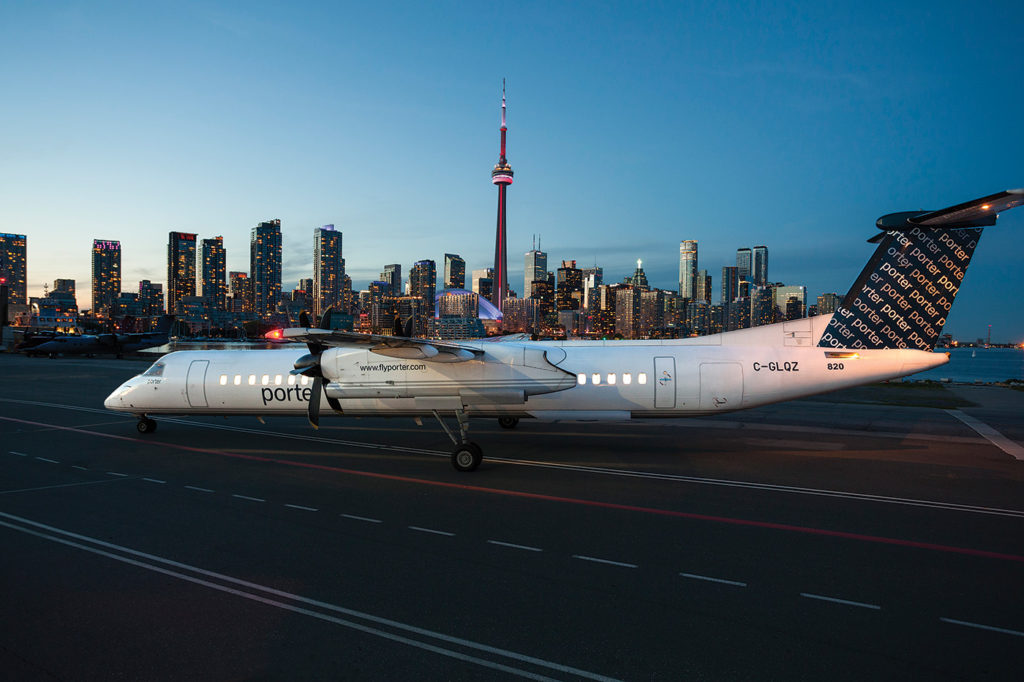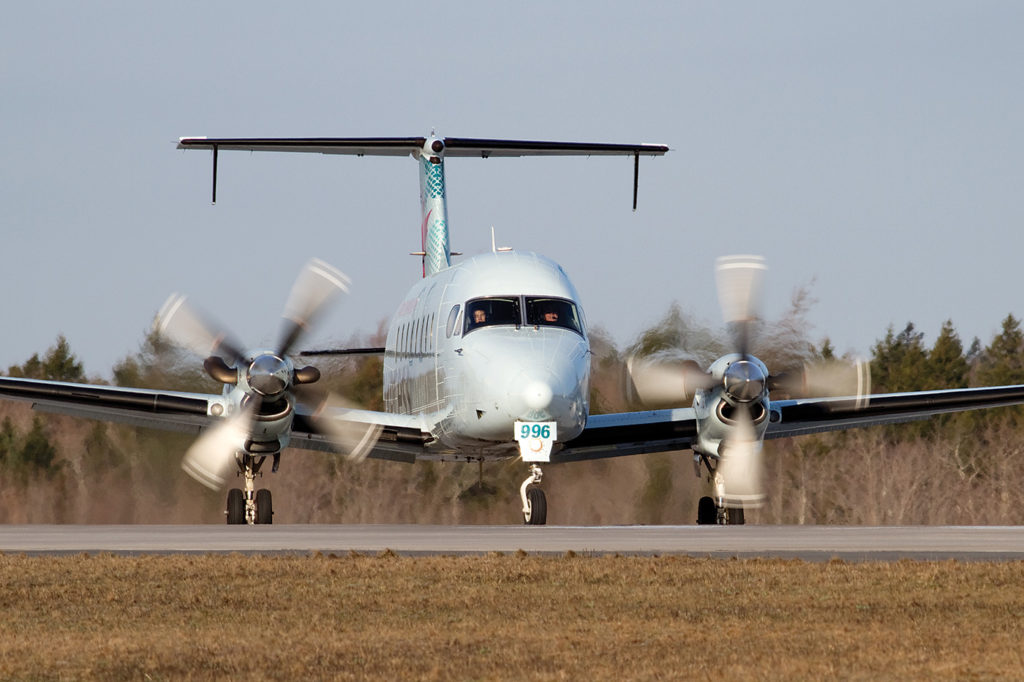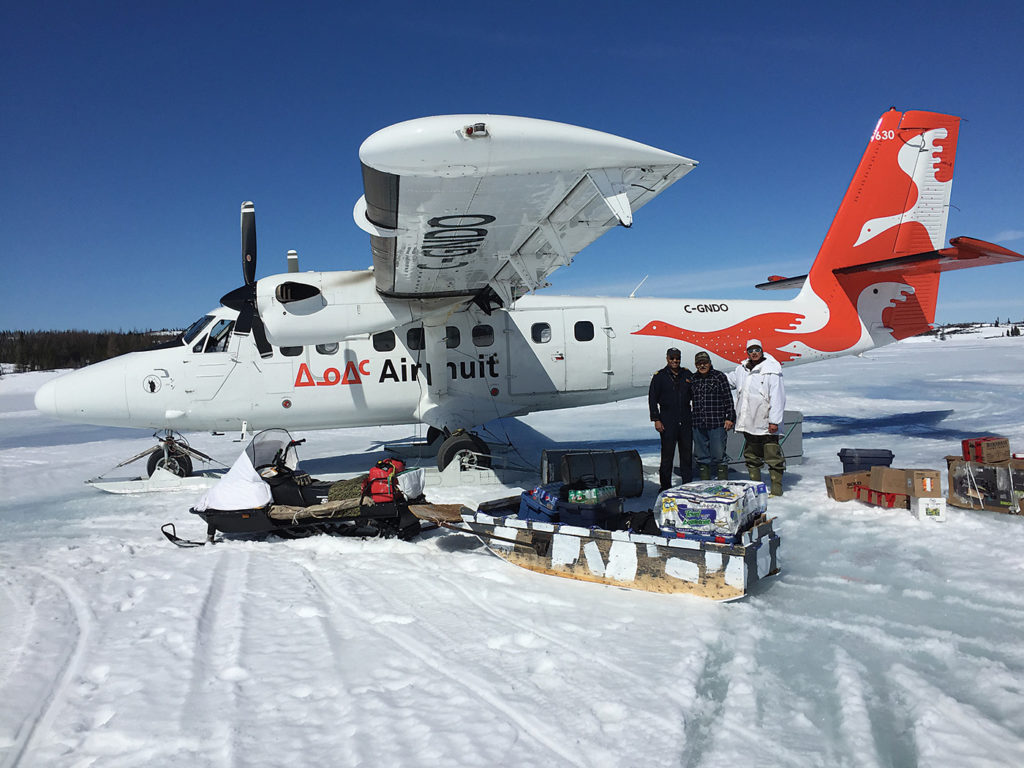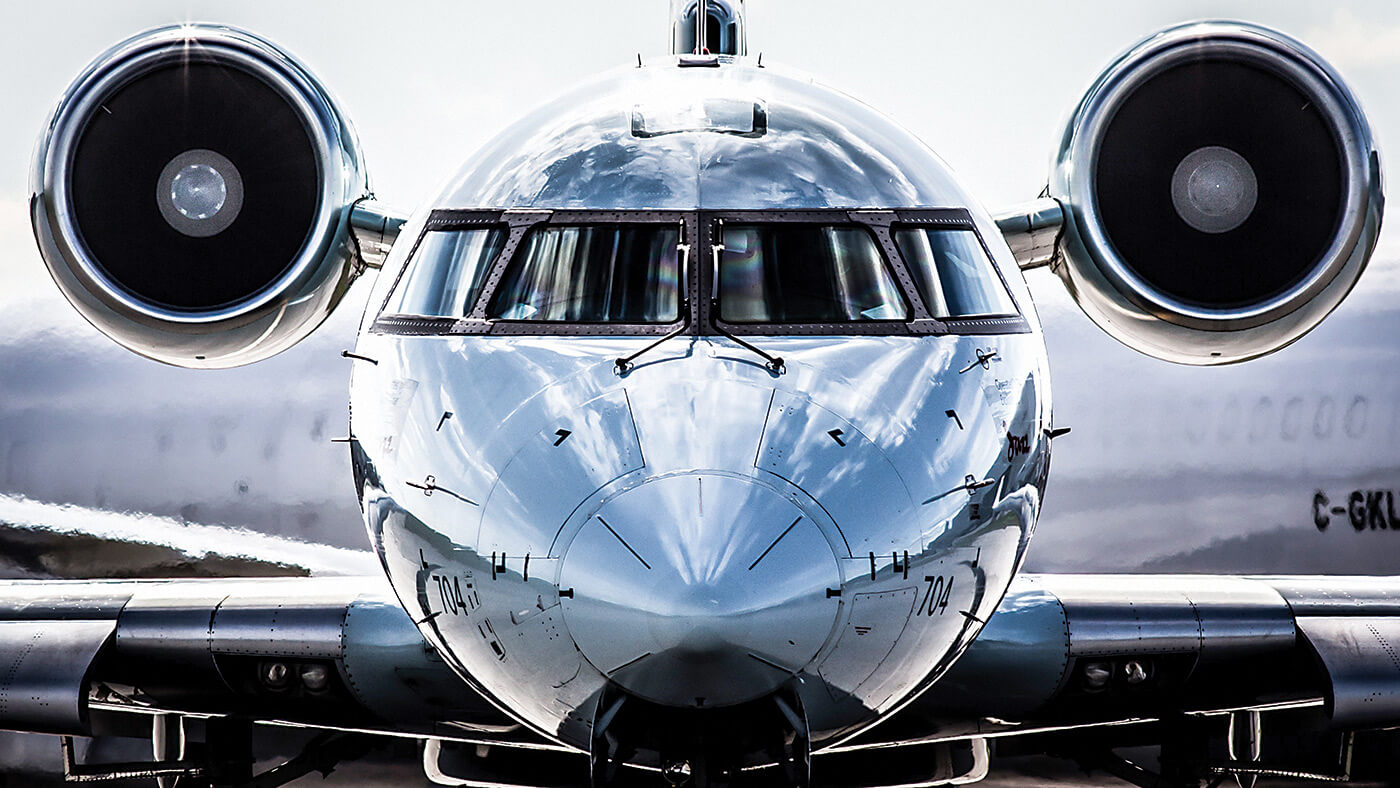Estimated reading time 12 minutes, 48 seconds.
You don’t have to tell Canada’s regional airlines that commercial pilots are hard to find these days. They’re experiencing the harsh realities of the shortage every day, and struggling to keep their rosters full and flight schedules maintained in the face of it.
“There’s a shortage of pilots on top, and that shortage is filtering down to the regional carriers as the major airlines hire away pilots at an accelerated pace to fill their schedules,” explained John McKenna, president and CEO of the Air Transport Association of Canada (ATAC). “The resulting pressure on the regional airlines is incredible. Some have had to park planes because they are so short of pilots.”
One regional carrier feeling the pinch is Air Georgian, which flies Beechcraft 1900s and Bombardier CRJ-100/200s under the Air Canada Express banner.
“We have had to cancel flights, simply because pilots have left us for major carriers with a month’s notice or less,” said Julie Mailhot, chief operating officer with Air Georgian. “A month is not enough time to hire and train new pilots to fill these gaps. Recruitment is not a big challenge because of the Pilot Mobility Agreement with Air Canada. But on the flip side, we also have to feed pilots to Air Canada, so it is still challenging.”

An unnamed regional carrier told Skies that they lost 10 pilots to the majors in one month alone. In many cases, the departing pilots only gave the airline two weeks’ notice.
The record for regional pilot turnover may well belong to First Air, an Ottawa-based carrier serving Northern Canada with a fleet of ATR 42-300s/500s and Boeing 737-400/400Cs.
“At a time where we’ve seen the employment lifespan of a First Air pilot drop from five years to below two years, the prize belongs to the pilot we trained who finished ground school on July 1, then contacted me on July 4 to say, ‘I quit,’ ” said Aaron Speer, First Air’s vice-president of flight operations. “He didn’t even make it to service. He just went straight to a major carrier and left us hanging.”
Flight crew availability is no better in the Canadian helicopter industry. Helicopter Association of Canada president Fred Jones told Skies there are turbulent times ahead.
“It’s going to be a crisis,” he predicted. “Right now, it’s a challenge. Every summer, I get calls from operators looking for engineers, looking for pilots, and they can’t operate some aircraft because they don’t have the experienced personnel to do it.”
Jones said the recent slowdown in the helicopter industry has resulted in a “stay of execution,” but when the cyclical industry turns around again, the pilot pinch will be strongly felt.
In addition, “changes to fatigue management rules will mean more flight crews will be needed. There are difficult years ahead.”
To put the current pilot shortage into context, ATAC’s McKenna compares it to the collapse of Newfoundland’s cod fishery in the 1990s. Over-fishing in that industry resulted in fewer and smaller fish being caught, until cod stocks ran so low that the federal government ordered an end to all fishing.
“Of course, pilots aren’t cod,” said McKenna. “But considering how the regional airlines are being forced to park planes and lose revenue due to the majors taking more pilots than the regionals can afford to lose, there is something to the analogy.”
One shortage, many causes
There are many reasons why major carriers are “over-fishing” the regionals. (Even flight schools are losing instructor pilots to the majors’ pilot-streaming programs, say the regional airlines who spoke with Skies for this story.)
One widely-cited cause is the retirement of baby boomer pilots.
“As they leave the flight decks of Air Canada and WestJet, someone has to take their place,” said Jason Friesen, chief pilot with Bearskin Airlines, a Thunder Bay, Ont.-based regional carrier that flies Fairchild Metroliners.

“But that’s not all that’s happening here: Many major airlines around the world are expanding their flight schedules, as falling ticket prices keep attracting additional passengers to airplanes.”
This has resulted in the strange situation where it is cheaper to fly across Canada than travelling by train or even bus, said Friesen, even as airlines go begging for pilots to crew those cheap flights.
These factors are creating a tremendous demand for pilots in Canada, which is why ATAC’s McKenna estimates that the commercial airline industry could now be short up to 600 pilots annually.
But according to Robert Deluce, the president and CEO of Toronto-based Porter Airlines, the situation could get worse as a result of proposed new pilot fatigue regulations issued by Transport Canada.
“The new regulations to reduce flying hours for pilots are designed for long-haul flights, but the implication for regional airlines would be significant,” he explained.
“There will be a need for all airlines to have approximately 10 per cent more pilots in a very short amount of time. This will put great stress on the pilot supply pipeline at a time when it is already a sensitive issue for airlines around the world.”
Hard to compete
In the world of commercial aviation, major carriers such as Air Canada and WestJet offer the highest salaries, best benefits, and most modern equipment, such as cutting-edge aircraft like the Boeing 787 Dreamliner. As a result, the regionals find it hard to compete when the majors come trawling for new pilots.
Consider the case of Air Inuit, which covers Northern Canada out of Montreal’s Pierre Elliott Trudeau International Airport using a mix of Boeing 737-200, Bombardier Dash 8 100/300, British Aerospace Hawker Siddeley 748, de Havilland Canada Twin Otter 300, and Beechcraft King Air 100/350 series aircraft.
“It is pretty hard for Nunavut’s Resolute Bay to compete with Paris [France] for winning a pilot’s affections; especially when they have to overnight in Resolute Bay in January,” said David Minty, Air Inuit’s manager of training standards. “Paris is definitely nicer.”
Then there’s the reality that the majority of new Canadian pilots are southern urbanites. Many of the young pilots who join Air Inuit and other regionals are itching to get back home as soon as they can–and back home isn’t likely in Resolute Bay, but somewhere warmer like Calgary, Montreal or Toronto; all bases for major carriers.

“Frankly, the desire to fly with the majors out of Southern Canada means that offering higher wages is no guarantee of keeping pilots,” said First Air’s Speer.
“Time and again, we’ve lost pilots to other small carriers who pay less than us, but who offer a clear path to flying with a major carrier over time. That kind of assured career path means more to many pilots than what they’re being paid this week.”
A deeper problem
The pilot shortage is certainly a current-day crisis, but it is also a symptom of a deeper, longer-term problem: Canada isn’t producing enough pilots to keep up with demand.
Why not? Well, government policies that regulate career colleges have put many smaller flight schools out of business, said Speer, leaving the remaining larger schools to pick up the slack. Those larger schools are increasingly training foreign students on government scholarships, who then head home to fly in other countries.
“Our flight schools are graduating about the same number of pilots, but about half are not staying in Canada once they finish,” he continued. “This gives our domestic aviation industry a smaller pool of new pilots to hire from.”
Of course, if young Canadians were flocking to flight schools, then the increased number of foreign students wouldn’t be an issue. Flight schools would simply expand to handle the extra enrollment.
Unfortunately, the millennial generation is not passionate about flying the way earlier generations once were.
“When I grew up, people’s career options were generally pretty limited, with being a pilot at the top of the list,” said Air Inuit’s Minty. “But today, thanks to technology, there is a wealth of career options for young people to choose from; many of which pay better and offer easier working schedules than flying. This means a lot fewer people are being bitten by the flying bug.”
And then there’s the high cost of training.
Aspiring pilots who have been hooked by flying “must pay anywhere from $12,000 to $15,000 to get their private licence, without hope of any government assistance to cover the cost,” said Wendy Taylor.

She is president of Alkan Air, a regional carrier and flight school based in Whitehorse, Yukon, that flies two Cessna 172s and a Piper PA-34 Seneca.
“That’s a huge barrier to entry for any 17 to 18-year-old, especially in today’s economy.”
Fighting back
Fundamentally, the current pilot shortage is due to the absence of any planned, coordinated, and properly-funded strategy by government and/or industry to ensure a sufficient, ongoing supply of commercial pilots in Canada.
To their credit, carriers of varying sizes are now working with ATAC to develop such a strategy. This includes majors and regionals getting together to talk out their upcoming pilot requirements, and looking for ways to collectively address them without the top level of commercial aviation raiding the lower levels into operational paralysis and financial ruin.
(One ATAC idea is to convince retiring pilots to be part-time flight instructors, to free some current instructors for flying jobs without compromising the schools’ capacity to teach.)
Still, more needs to be done to increase the pool of new talent coming into Canadian aviation.
“There are not enough high school students interested in flying, so we need to start reaching out and inspiring them at an early age,” said McKenna. “We also need to make commercial flying careers more appealing to women, by perhaps adjusting the schedules and shifts to be more accommodating to those wanting to raise families.”
Attracting pilots from other countries is another option, he said.
High training costs must also be addressed.
“The government will have to step up and recognize the occupation,” said Eric Scott, Harbour Air’s vice-president of flight operations and safety. Based in Richmond, B.C., Harbour Air serves Canada’s West Coast with 35 seaplanes including 10 de Havilland Canada DHC-2 Beavers, 23 DHC-3 Otters, and two DHC-6 Twin Otters.
“It needs better support like they provide for conventional degrees and diplomas, with proper funding availability for students.”
On a carrier basis, regionals such as Alkan Air, Air Georgian, Harbour Air, and Porter have all launched their own programs to find and retain pilots.
“Being the only flight school/college program in the North helps Alkan Air attract and train northerners who love the work-life balance here, and want to stay for their professional lives,” said Jenna Collee, Alkan Air’s flight training unit manager. “The best way to retain pilots is to hire people who want to raise families where you are.”
Alkan Air’s program ties in with the Northern Air Transport Association’s (NATA’s) own approach to the pilot shortage.
” ‘Training northerners by northerners for northern jobs’ is the credo of the NATA Skills Development Committee,” said NATA executive director Glenn Priestley. For instance, “Under the chairmanship of Air Inuit’s Dave Minty, that company’s ‘Sparrow’ program has resulted in numerous new hires from northern communities.”

Air Georgian’s pilot recruitment program is called SOAR (Sharing Opportunities for Advancement and Reward).
“SOAR gives pilots various entry points into Air Georgian and a direct pathway to Air Canada with a guaranteed interview,” said Jeslene Bryant, who is the company’s SOAR coordinator. “As an example, our ATAC program is open to all 703/704 ATAC members willing to align their operating and safety procedures with Air Georgian’s while providing extended and coordinated notice period to participating regional carriers–thus addressing the two weeks’ notice dilemma that has been grounding carriers’ aircraft.”
At Harbour Air, “We are expanding our training to fill the gaps the lesser experienced candidates are coming in with,” said Scott. “We are creating mentorship programs that will take junior pilots out of school and into a more defined progression path than we have had in the past.”
As for Porter? “It has been necessary to reorganize our hiring plans by including more new pilot classes this year,” said Deluce.
That said, Porter has “been more proactive for a number of years by forming relationships with flight colleges and other training groups,” noted Deluce. “These take time to show results, but we are already hiring pilots based on these relationships.”
If all those initiatives bear fruit–including convincing government to properly fund pilot training from the private pilot licence phase–then Canada will be on track to resolve its ongoing pilot shortage.
If not, then regional carriers may be forced to suspend more flights and even cut service to the smallest, most remote Canadian communities–because when pilots are scarce, it only makes sense to reserve them for higher volume flights.
“If we don’t address the pilot shortage effectively, it could seriously hurt Canadian commercial aviation,” said ATAC’s John McKenna. “These are the very high stakes we are playing for.”


Government could help in some areas, but this is not a government problem. This is an industry problem. Specifically, a wage problem. Air carriers (top to bottom) have been built on a 60 year culture of frozen pilot wages which was due to past pilot surpluses. The industry has known this issue was coming since I started flying, but hasn’t acted. In the 30 years I’ve been involved in aviation, low cost models were/are based on current pilot wages. None of those models were willing to actually forecast and then act to prevent the shortage. By not acting to raise the wage base line and attract young people to the industry, there are too few bodies coming through the system. People are smart enough to look at the return on investment in a pilot career and recognize it is not good. Cost of training has risen steadily, catching no one by surprise (at roughly 3% per year since I started, based on your numbers) and wages have not moved with entry level pilots earning between 30 and 40 thousand a year (Alberta’s minimum wage is 30K). THAT is why schools are not training Canadian Pilots and there aren’t enough candidates, there aren’t any young people interested because they are smart enough to look at this long term. The solution is simple, but will take time to be realized once implemented. Industry (not government) needs to raise pilot wages dramatically and immediately to attract new pilots. Until then, air carriers are reaping what they’ve sown.
Where do I sign up?
CPL,MIFR,
Electrition
Take a quick peek at regional pay scales and quality of life and you will quickly see why so many pilots scramble to major airlines. Companies specifically based around the Air Canada and Westjet feeder (regional) system pay close minumum wage to staff their aircraft with routinely long days, weeks and months. The regionals profited in an era of high pilot supply, large management bonuses and low pay scales. Now they are reaping what they sowed, which unfortunately is an increasingly hostile and unforgiving workforce who will not tolerate poor pay and working conditions.
Why do they never address the elephant in the room? Pay! I’m a very experienced Canadian pilot working in Asia. I’d love to come home and fly for any of these regional airlines but the pay as a new hire pilot is so bad that I can’t afford to! It takes 5 years work at any of the carriers quoted to make what I make in Asia in 1 year. It’s also a big reason why I have discouraged my children from going into aviation. Until the carriers address pay and lifestyle issues, the shortage will continue to get worse.
And not a mention of the near poverty wages a pilot and 21 days away from home a regional pilot can expect as a cause.
Please, it’s been almost over ten years they keep saying this over and over again. They know the main problem and almost nothing is commanded to settle that problem, limited exception here for Porter Airlines. They will certainly not done for playing that old song …
The problem is quite simple:
The level entry wages for the regionals ( 27,000 CAD $ a year ) do not match the 80, 000 CAD $ that you will need to get your license.
Besides, the not appealing schedule that poses challenges to have a social life, or any kind of relationship makes it even harder to find young people who have developed a strong sense of entitlement.
Divorce rate among the outgoing generation of pilots is disproportionately high. It even has its own acronym; AIDS, Aviation Induced Divorce Syndrome. The new generation isn’t interested in making the mistakes of their parents, they’re putting family first. This means that companies with bad schedules, far from the pilot’s homes are going to have a harder time finding pilots. There will be some single people who do it short term for the adventure, but eventually everybody wants to settle near friends and family.
You’ve just worked a tiring and stressful 13 hour long day. Would you rather hug your significant other and tuck your kids into bed or check into a hotel room? The current generation is picking an office job where they do neither. They work an 8 hour day and go home at the end. The piloting profession is no longer glamorous like it once was. Now it’s a tiring and tedious job where the pay sucks and it takes a toll on your family life.
It also doesn’t help when the pay is stagnant or even decreasing. Even the good companies haven’t even kept up with inflation. Sure First Air pays better than Jazz, but it’s still not a good salary.
I agree. This article neglects to mention that by far the biggest reason that we now find ourselves in this predicament is that wage and working conditions have steadily declined and today’s youth don’t see a return on investment to pay for a pilots licence. We as pilots are also to blame for allowing companies to degrade our profession.
If the author of this article truly did their homework we could examine the differences in licensing cost and wage and working conditions from 20, 30, 40 years ago.
Even now aviation companies refuse to see the forest through the trees.
I’m currently an airline captain with a major carrier with more than 24 years experience.
That’s a pretty long article to not mention the REAL reason there’s a “shortage” – pilot pay sucks. Deuce & Co. all know this, yet peddle this narrative or retirements and foreigners.
All your licenses cost what? $100,000? (article nicely omits all the training needed AFTER the PPL). Then you still have to beg and plead for a job making $20,000 a year in a far off land… So you can get to WestJet/AC after 5+ years to make $50,000 a year based in some of the most expensive cities of the world?
Follow the money stupid – any carrier in Canada can fill their rosters if they pay, and treat, their pilots fairly. Pretty damn simple.
No analysis required. All carriers bear responsibility for their situation. If a carrier makes their work conditions (pay, benefits, time off, control over schedule, etc..) as or more attractive as a bigger one, they will drastically reduce attrition. Most pilots chase lifestyle, not bigger metal. Right now becoming a pilot can only be a choice of passion for flying, as the return on investment makes no sense on paper.
It’s almost like they’re gonna have to start…GHASP…**Paying pilots to go to work!!** Just as it is in the US, there is NO PILOT SHORTAGE, simply a WAGE SHORTAGE. Any regional paying a professional wage to professional pilots, or offering a flowthrough to a major carrier has NO PROBLEM attracting pilot labor. You can’t pay foodstamp wages to these guys anymore, it’s not 2009. Sorry not sorry. Fix it.
It is so funny when we speak of Pilot shortage when I know 60 people including myself who seeking a flying Job. none of 703 704 guys is calling because we just have 250 hours and they believe Canadian aviation standards and flight training is not trustworthy, so they can not give us a job. let them have their fleets grounded. The best way out of the current situation would be small careers hire 250 hours guys. Let them be second in command, in a year they will be second in command and fly into remote areas, in a year or 18 months they will be the best asset for the company. They can move to captain seat and you hire more fresh CPL to be your first officers, and so on. meanwhile, those people who like to stay with friend and family and have the advantage of big cities would instruct, making PIC hours and provide more fresh CPL.
Back in the days pilots did enjoy their share of some what celebrity life style. Now a truck driver earns more than a pilot . Why would any one be a pilot if he or she has to spend 100s of thousands of dollars just to satisfy their passion for flying and not make their investment and time logical enough. If your are qualified for a job then you should get paid for what that job really deserves. Its better to reconsider the pay structure of pilots than to park air crafts.
Making this career attractive once again cannot be done by pay structure alone. If an airline value its customers, then they should value their technical staff the way its supposed to. Bring the zing back to that role so it would encourage young men and women to take up this career. Many people I know have moved to different career after getting their CPL because their passion didnt make financial sense once they started to look for jobs after flight school.